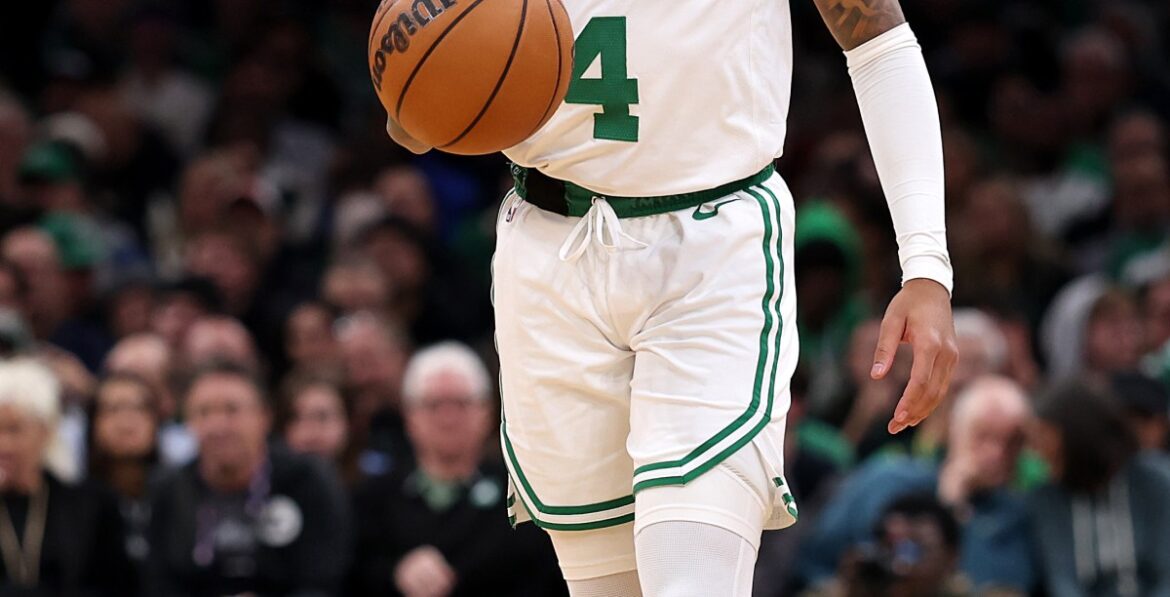Anfernee Simons’ usage and minutes in the 2025–26 NBA season have been inconsistent. For a player making $25 million who averaged 32.9 minutes per game over the past four years and is still only 26, it’s unusual for his role to fluctuate this much. But the reason for that inconsistency isn’t complicated: to earn minutes on a Joe Mazzulla team, you need to do more than shoot the ball effectively.
If Anfernee Simons wants to play more, the formula is simple: rebound better and play slightly better defense. The Celtics’ offense has exceeded expectations, but they are building a defensive identity—flying around, gang-rebounding, forcing turnovers, guarding their yard, and scrapping on every possession. Simons hasn’t fit that mold.
A common basketball trope you will hear is, “Defense is mostly effort.” I disagree. Effort matters, yes, but defense is also a skill. Playing hard is a skill. Derrick White didn’t become one of the best shot-blocking guards in the league by accident—he honed that craft. Based solely on their physical dimensions, Simons should be able to replicate a portion of White’s defensive impact. Both are six-foot-four, athletic guards; Simons may even be the better athlete, as evidenced by his dunk contest showing. The tape says otherwise.
Screen navigation is hard. Celtics fans have been blessed with watching some of the best screen navigation in the league for close to a decade between Marcus Smart, Jrue Holiday, and Derrick White. Simons ends up behind the play, doesn’t impact the ball handler, or make an attempt to impact the pass to Nic Claxton. To be fair to Simons, Garza isn’t making Simons’ life any easier.
I don’t think this is a lack of effort. Simons tries to impact Michael Porter Jr’s shot, which he misses, but then Simons proceeds to completely lose Terance Mann and give up an easy dunk.
Simons gets swallowed by a Brook Lopez screen at halfcourt and doesn’t make a great effort to get back into the play. Joe Mazzulla seems very happy as he calls a timeout.
On some NBA teams, elite scoring alone earns you as many minutes as you want. In Boston, everyone is expected to contribute on the margins. Jaylen Brown and Jayson Tatum have set that standard. Being an elite scorer doesn’t excuse you from impacting the game in other ways.
If Simons wants more playing time, he could start by matching Payton Pritchard’s effort on the glass. Simons has an offensive rebounding percentage of just 1.2%. Pritchard, who is five inches shorter and far less explosive, sits at 2.8%. A big part of Boston’s offensive success this season has come from the offensive glass; they rank 8th in offensive rebounding. Aside from Simons, no Celtic players have an offensive rebounding percentage of less than 2.4%.
Joe Mazzulla cannot have two sets of rules. One can’t say: Max out your effort, chase loose balls, fight for every rebound, sell out on the offensive glass, or someone else will play…then turn around and give Simons different standards because he averaged 20 points per game on a bad Portland team.
Boston is top-10 in both offense and defense and sits 3rd in net rating in the Eastern Conference. They are two games out of the second seed. I’ve been wrong about this team—they’ve exceeded my expectations, especially defensively. What Mazzulla is doing is working. There’s no reason to force an Anfernee-Simons-shaped peg into a Mazzulla-ball-shaped hole.
He is clearly an elite shooter, especially on catch-and-shoot threes—he’s hitting a blistering 47.4%. But the effectiveness ends there. His pull-up shooting has been subpar (31% from three), and his ability to generate shots inside the arc has been underwhelming. Simons has never been great at getting to the rim. His career high in rim frequency came in 2023–24, when he took 22% of his shots at the rim (47th percentile) and hit just 58% of them (33rd percentile). In Boston, both numbers have cratered: career lows in frequency (9th percentile) and accuracy (14th percentile). It’s possible he’s still adjusting and an offensive breakout is coming. I’m dubious.
Some might argue that Mazzulla’s fluctuating usage is hurting Simons’ rhythm, so the question becomes: Should Mazzulla be trying to maximize Simons? With the Celtics lacking the offensive firepower of recent seasons, it’s a reasonable thought. Unlocking Simons could give the offense a needed jolt and increase his trade value.
But in reality, Simons is getting plenty of opportunity. He’s fourth on the team in minutes at 24.6 per game.
Zooming out, the 2025-2026 Boston Celtics should be prioritising the future. Prioritizing minutes for Jordan Walsh, Hugo Gonzalez, Josh Minott, and Payton Pritchard makes more sense than trying to rehabilitate the value of a player who doesn’t fit the mold of a modern winning player.
